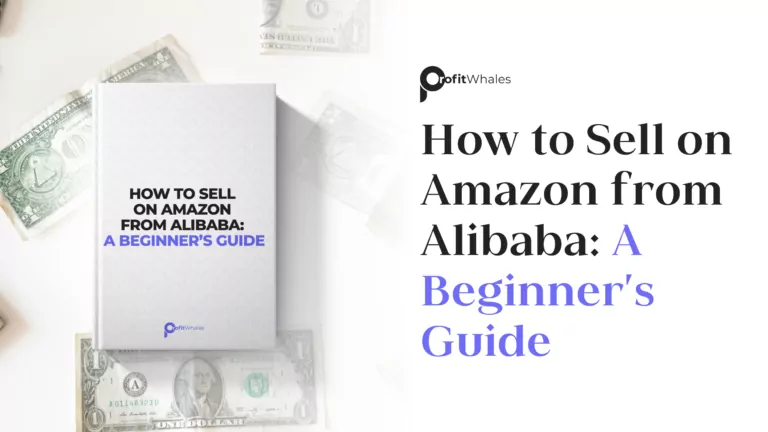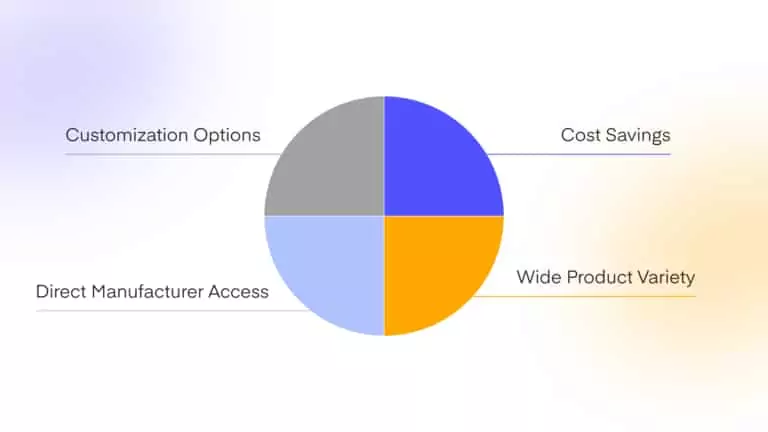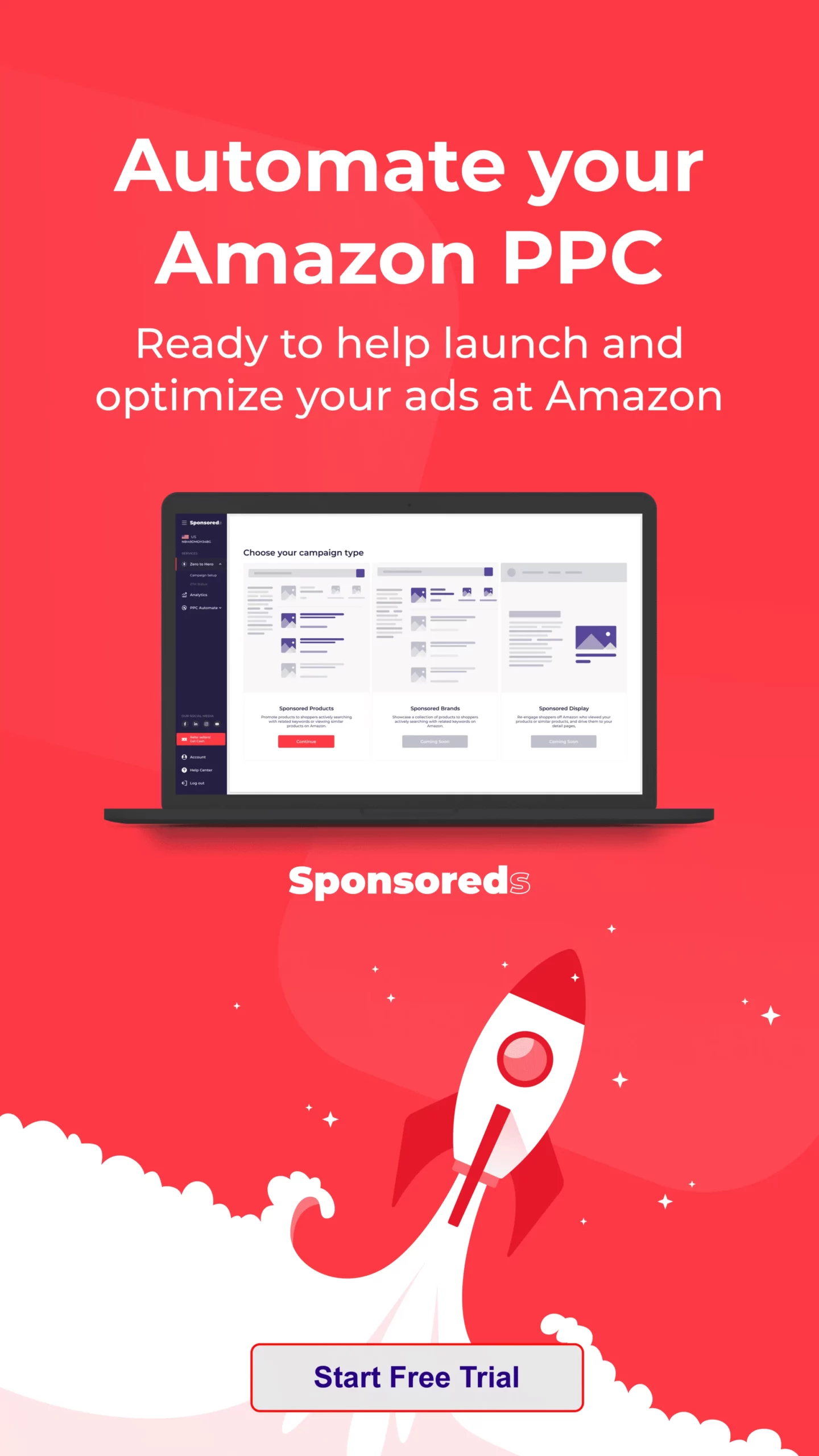Introduction to Alibaba and Amazon Selling
Alibaba is one of the world’s largest online marketplaces, connecting manufacturers and wholesalers primarily from China with buyers globally. Founded in 1999, it offers a vast range of products at competitive prices, making it popular among businesses looking to source products in bulk. Alibaba supports business-to-business (B2B) transactions, which allows buyers to purchase goods in large quantities directly from manufacturers. This setup helps reduce costs and increases profitability for sellers.
Alibaba operates in various segments, including Alibaba.com, which focuses on global trade, and 1688.com, which caters to the Chinese domestic market. Alibaba.com has millions of suppliers offering products across nearly every category imaginable, from electronics and apparel to machinery and raw materials.
Why Choose Alibaba for Sourcing Products?
Alibaba offers several advantages for sourcing products. Firstly, it provides a wide selection of items across various categories, making it easy to find products that suit your business needs. The platform’s extensive network of manufacturers ensures competitive pricing, which can significantly increase your profit margins when selling on Amazon. Additionally, many suppliers on Alibaba offer customization options for private labeling, allowing you to build a unique brand. This customization can include changes in packaging, product design, and branding elements.
Key Differences Between Alibaba and Aliexpress
While both platforms are part of the Alibaba Group, they serve different purposes. Alibaba is primarily for B2B transactions, catering to businesses looking to purchase in bulk. This is ideal for Amazon sellers who need large quantities of products to achieve economies of scale. In contrast, Aliexpress targets individual consumers, allowing for single-item purchases. Consequently, Alibaba typically offers lower prices and requires higher minimum order quantities compared to Aliexpress. Understanding these differences is crucial for selecting the right platform for your business needs.
Another key difference is the level of customization available. Alibaba suppliers are more likely to offer customization options, such as private labeling and bespoke product designs, essential for building a unique brand. Aliexpress, on the other hand, focuses on ready-made products with limited customization options. Additionally, the shipping methods and times can vary between the two platforms. Alibaba often involves more complex logistics due to bulk orders and international shipping, whereas Aliexpress typically uses faster, consumer-oriented shipping options like ePacket or standard shipping methods.
Getting Started with Alibaba
Before sourcing products, you need to set up your Alibaba account and understand the payment methods and ways to mitigate risks when dealing with suppliers.
Creating an Alibaba Account
Creating an Alibaba account is straightforward. Visit Alibaba.com and click on the “Join Free” button. You will need to fill in the required information, including your email address, company name, and contact details. After submitting the form, you will receive a verification email. Click the link to verify your account. Once your account is verified, complete your profile by providing additional details about your business. This step is crucial as a well-completed profile can improve your credibility with suppliers and increase your chances of securing good deals.
Alibaba’s Payment Methods
Alibaba offers several secure payment options to protect both buyers and sellers. One of the most popular methods is Trade Assurance, a free service provided by Alibaba that protects buyers in case of order issues such as shipping delays or quality problems. It ensures your payment is secure until you confirm that the order meets your expectations.
Trade Assurance works by holding your payment in escrow until you confirm that the products have been received in good condition and meet the agreed specifications. If there are any issues with the order, you can file a dispute, and Alibaba will mediate to resolve the problem.
Other payment methods include credit and debit cards, which are convenient for small orders, and wire transfers, which are suitable for larger transactions but may take longer to process. Wire transfers are often preferred for bulk orders due to lower transaction fees compared to credit card payments.
PayPal is also an option, providing added security, although suppliers less commonly accept it. PayPal transactions are fast and secure, making them ideal for initial sample orders or small purchases. However, the higher fees associated with PayPal can make it less cost-effective for large transactions.
Mitigating Risks on Alibaba
To ensure a smooth sourcing experience, it’s crucial to identify trustworthy suppliers and ensure product quality. Look for indicators such as Gold Supplier status, which signifies a premium membership with verified credentials, and Trade Assurance, which offers buyer protection for your orders. Positive supplier reviews can also be a good indicator of reliability. To further ensure product quality, request samples before placing a large order and consider factory inspections to verify production capabilities. Inspecting samples allows you to assess the quality firsthand and make necessary adjustments before committing to bulk orders.
When evaluating suppliers, consider their response time, communication skills, and willingness to provide detailed information about their products and processes. A reliable supplier should be transparent about their production capabilities, lead times, and quality control measures.
Product Research and Selection
Selecting the right products is crucial for your success on Amazon. This section guides you through finding profitable products, using Amazon’s trending searches, and analyzing demand and competition.
Finding Profitable Products on Alibaba
To find profitable products, conduct thorough market research using tools like Jungle Scout or Helium 10. These tools help identify high-demand, low-competition products. When selecting products, consider their profit margin, weight, size, and non-seasonal nature to ensure consistent sales throughout the year. Products with high-profit margins, lightweight and compact designs, and year-round demand are generally more successful on Amazon.
Start by identifying a niche or category that interests you or aligns with your expertise. Use market research tools to analyze the performance of products within this niche, focusing on metrics such as sales volume, competition, and pricing. Look for products with a high sales rank and low competition, as these are more likely to generate consistent sales and profits.
When evaluating potential products, consider the cost of goods sold (COGS). This includes the purchase price, shipping costs, and any additional fees or tariffs. Ensure that the profit margin is sufficient to cover these costs and leave room for marketing and other expenses.
Using Amazon’s Trending Searches for Product Ideas
Amazon’s trending searches provide valuable insights into what consumers are currently looking for. Regularly monitor these trends to identify potential product opportunities. Tools like Amazon’s Best Sellers list the most popular products across different categories. At the same time, Movers & Shakers show products that have seen the most significant increase in sales rank over the past 24 hours. The Amazon Trend Report highlights emerging trends and popular products. By staying updated with these tools, you can identify trending products and align your sourcing strategy accordingly.
Trending searches can also help you identify seasonal trends and emerging markets. For example, you may notice increased demand for certain products during the holiday or in response to current events. Capitalizing on these trends allows you to position your products to meet consumer demand and maximize sales.
Analyzing Product Demand and Competition
Before committing to a product, analyze its demand and competition. Use tools like Google Trends and Amazon Sales Estimator to gauge the product’s popularity and sales potential. High demand indicates a healthy market for the product. Evaluate the number of competing sellers, product reviews, and ratings to determine the level of competition. Look for niches with high demand but low to moderate competition to maximize your chances of success.
Analyze the reviews and ratings of competing products to identify common complaints and areas for improvement. Addressing these issues and offering a superior alternative can help you differentiate your product. Additionally, look for gaps in the market where existing products do not fully meet consumer needs or preferences.
Sourcing and Customizing Products
Once you’ve selected your products, find reliable suppliers, evaluate their credibility, and decide between private labeling and white labeling.
Finding Reliable Suppliers
To find reliable suppliers, use Alibaba’s search filters to narrow down your options. Check the supplier’s business license, history, and reputation. Request product samples to verify quality and ensure the supplier can meet your standards. A thorough vetting process can help avoid unreliable suppliers and ensure a smooth sourcing experience.
When searching for suppliers, use filters such as Gold Supplier, Trade Assurance, and Verified Supplier to identify reputable companies. Review their transaction history, customer feedback, and response rates to assess their reliability. Communicate with multiple suppliers to compare their offers, ask for detailed product information, and request samples.
Evaluating Supplier Credibility
Evaluate potential suppliers by considering their company background and communication. Assess their responsiveness and professionalism and request samples to verify product quality. A prompt, clear, and professional supplier in their communication is likely more reliable. Reviewing their business license and history can also provide insights into their legitimacy and experience.
Request detailed information about the supplier’s production processes, quality control measures, and lead times. Ask for references or contact previous clients to get feedback on their experience with the supplier. If possible, visit the supplier’s factory or use a third-party inspection service to verify their capabilities and infrastructure.
Contacting and Negotiating with Suppliers
Effective communication and negotiation are key to building a good relationship with suppliers. Introduce your business, state your requirements clearly, and request quotes. Provide detailed information about the products you are interested in, including specifications, quantities, and desired customizations. During negotiations, discuss pricing, minimum order quantities, payment terms, and delivery times to reach mutually beneficial agreements. Aim to build a long-term relationship with suppliers to ensure consistent product quality and reliable supply.
When contacting suppliers, be clear and concise in your communication. Use simple language and provide all necessary details to avoid misunderstandings. Be respectful and professional in your interactions, and be prepared to negotiate on various aspects of the deal, including price, payment terms, and delivery schedules.
Private Labeling vs. White Labeling
Decide whether to opt for private labeling or white labeling based on your business goals. Private labeling involves creating your own brand and packaging for a product, allowing you to build a unique brand identity and differentiate your products from competitors. This option requires more investment in branding and marketing but can lead to higher profit margins and brand loyalty. White labeling involves rebranding existing products with minimal changes, offering a quicker way to enter the market but with less differentiation. This option suits those looking to start quickly without significant investment in branding.
Private labeling offers greater control over your product’s appearance and quality, allowing you to create a unique brand that stands out in the marketplace. This can lead to increased customer loyalty and higher profit margins, as consumers are often willing to pay a premium for branded products. However, private labeling requires more effort in product design, packaging, and marketing, as well as higher initial investment.
Shipping and Listing Products
Shipping and listing your products on Amazon are crucial steps in the selling process. This section covers how to ship your products from Alibaba to Amazon FBA and create compelling product listings.
Shipping from Alibaba to Amazon FBA
Shipping your products efficiently is essential for maintaining profitability. Based on your budget and timeline, choose between air, sea, or express shipping. Air shipping is faster but more expensive, while sea shipping is cheaper but takes longer. Consider using a freight forwarder to handle logistics and customs clearance. A freight forwarder can help streamline the shipping process and ensure your products comply with import regulations. Efficient shipping helps minimize costs and ensures timely delivery to Amazon’s fulfillment centers.
When planning your shipping strategy, consider factors such as shipping costs, delivery times, and the potential impact on your cash flow. Faster shipping methods can help you get your products to market quickly but may reduce your profit margins. Conversely, slower methods like sea shipping can save money but require more careful inventory planning to avoid stockouts.
Creating a Compelling Product Listing
A well-crafted product listing can significantly impact your sales. Use relevant keywords and provide clear, concise information about your product’s features and benefits. Include multiple high-resolution images that showcase your product from different angles. Writing effective titles and descriptions is crucial. Ensure your titles and descriptions are keyword-rich and provide detailed information about your product. High-quality images are essential to attract customers and enhance the perceived value of your product. Include multiple images showing different angles and close-ups of important features.
When creating your product listing, focus on the following elements:
- Title: Your product title should be clear, concise, and include relevant keywords. It should accurately describe the product and highlight its key features.
- Bullet Points: Use bullet points to list the main features and benefits of your product. Keep them short and easy to read, emphasizing the most important aspects that will attract buyers.
- Description: The product description should provide detailed information about the product, including its specifications, usage, and benefits. Use persuasive language to highlight why your product is superior to competitors.
- Images: Include high-quality images that show the product from different angles and in use. Use a combination of lifestyle and studio shots to give potential buyers a clear understanding of the product’s appearance and functionality.
By optimizing these elements, you can create a compelling product listing that attracts more buyers and boosts your sales.
Optimizing Your Amazon Listing for SEO
Optimize your listing to improve its visibility on Amazon. Use tools like Amazon Keyword Planner to identify relevant keywords. Incorporate these keywords naturally into your product title, bullet points, and description. Include additional keywords in the backend of your listing to enhance discoverability. By optimizing your listing for SEO, you can improve your search ranking and attract more potential buyers.
When optimizing your listing, consider the following SEO best practices:
- Keyword Research: Identify high-volume, relevant keywords that potential buyers are likely to use when searching for products like yours. Use tools like Amazon Keyword Planner, Helium 10, or Jungle Scout to find these keywords.
- Keyword Placement: Incorporate your primary keywords into the product title, bullet points, and description. Use secondary keywords in the backend search terms to enhance discoverability without cluttering the visible content.
- Relevance and Readability: Ensure that your content is relevant and easy to read. Avoid keyword stuffing, which can make the text difficult to understand and negatively impact your search ranking. Focus on providing valuable information that helps buyers make informed decisions.
Regularly monitor your listing’s performance and make adjustments as needed to maintain optimal visibility and conversion rates. This may involve updating keywords, refreshing images, or revising the product description based on customer feedback and market trends.
Managing and Growing Your Business
Effective management and growth strategies are vital for Amazon’s long-term success. To ensure your business thrives, focus on maintaining optimal inventory levels, launching and promoting products effectively, expanding your business, and continuously improving your operations.
Inventory Management Best Practices
Maintain optimal inventory levels to prevent stockouts or overstocking. Use tools like Amazon’s Inventory Dashboard to monitor stock levels and set reorder points to ensure timely restocking. Consistently monitor and adjust these points as needed to align with your sales velocity. Effective inventory management helps avoid lost sales due to stockouts and reduces storage costs associated with overstocking.
Develop a robust inventory management system that includes regular stock checks, demand forecasting, and safety stock calculations. This system should account for lead times, seasonal fluctuations, and sales trends to ensure you always have the proper inventory.
Launching and Promoting Products
Implement effective launch and promotion strategies to boost sales. Utilize giveaways, discounts, and influencer marketing to generate initial sales and reviews. A successful product launch can help build momentum and improve your product’s visibility on Amazon. Running Amazon Pay-Per-Click (PPC) campaigns can also increase product visibility and drive traffic to your listings.
Plan your product launch well in advance, considering factors such as market demand, competition, and promotional budget. Develop a marketing plan that includes a mix of organic and paid strategies to maximize reach and impact.
Expanding Your Amazon Business
Explore opportunities to scale your business. Continuously research and add new products to your portfolio. Diversifying your product range can help mitigate risks and increase revenue. Expanding to other Amazon marketplaces, such as Amazon UK or Amazon Germany, to tap into new markets and growth opportunities.
As your business grows, invest in tools and resources that can help streamline operations and improve efficiency. This may include advanced inventory management systems, customer relationship management (CRM) software, and marketing automation tools.
Final Tips for Success
To ensure long-term success, focus on continuous improvement. Regularly review customer feedback and make necessary improvements to your products and listings. Responding to customer reviews and addressing concerns can help build trust and loyalty. Stay informed about the latest trends, tools, and best practices in e-commerce and Amazon selling. Staying informed allows you to adapt to changes and stay ahead of the competition.
For more advanced strategies and expert guidance, consider leveraging professional services like those offered by Profit Whales. Profit Whales specializes in helping Amazon sellers optimize their listings, manage advertising campaigns, and scale their businesses effectively.
FAQ
What are the common challenges new sellers face when sourcing from Alibaba?
New sellers often face challenges such as finding reliable suppliers, navigating communication barriers, and ensuring product quality. Establishing trust and maintaining effective communication with suppliers can be particularly challenging.
How can I protect my intellectual property when private labeling products from Alibaba?
To protect your intellectual property, register your trademark, use non-disclosure agreements (NDAs), and work with reputable suppliers who respect intellectual property rights. These steps help safeguard your brand and products from infringement.
What is the typical timeline for shipping products from Alibaba to Amazon FBA?
The timeline varies depending on the shipping method. Air shipping can take 5-10 days, while sea shipping can take 30-60 days. Express shipping offers faster delivery but at a higher cost. Plan your shipping strategy based on your budget and urgency.
How do I ensure my Alibaba supplier meets Amazon’s product safety standards?
Communicate your requirements clearly, request certifications, and consider third-party inspections to verify compliance with Amazon’s standards. Ensuring product safety helps prevent issues related to product quality and compliance.
What are the most effective ways to communicate with Alibaba suppliers who speak limited English?
Use simple, clear language, provide detailed specifications, and consider using translation tools or hiring a sourcing agent. Effective communication helps avoid misunderstandings and ensures your requirements are clearly understood.








